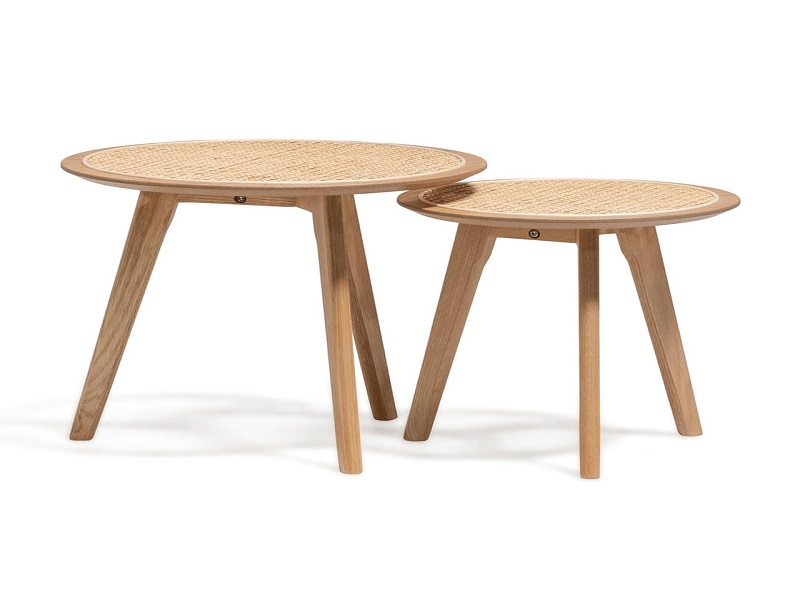Bringing the Outdoors In: Incorporating Biophilic Design into Your Home
Posted by The Urban Hyve Team on 21st Aug 2024
In today's fast-paced world, the connection to nature is more important than ever. Biophilic design, a concept rooted in the idea that humans have an innate affinity for nature, seeks to bring the outdoors indoors by incorporating natural elements into the built environment. From indoor plants and natural materials to views of greenery and access to natural light, biophilic design has been shown to improve well-being, productivity, and overall quality of life. In this article, we'll explore the principles of biophilic design and how you can incorporate them into your home to create a healthier, more harmonious living environment.
Understanding Biophilic Design
Biophilic design is based on the principle that humans have a deep-seated need to connect with nature, and that incorporating natural elements into the built environment can enhance our physical, mental, and emotional well-being. The term "biophilia" was first coined by biologist Edward O. Wilson, who argued that humans have an innate affinity for other living organisms and the natural world.
Biophilic design seeks to create spaces that foster this connection to nature by incorporating elements such as plants, natural materials, water features, and views of nature into the built environment. By bringing the outdoors indoors, biophilic design aims to create environments that are not only aesthetically pleasing but also supportive of human health and well-being.
Kedron Wood Dining Table 3m - Rustic Natural
Key Principles of Biophilic Design
There are several key principles of biophilic design that can guide the incorporation of natural elements into your home:
1. Natural Light
Maximising natural light is essential in biophilic design, as exposure to sunlight has been shown to positively impact mood, energy levels, and overall well-being. Consider ways to maximise natural light in your home, such as installing large windows, skylights, or light tubes, and minimising obstructions that block sunlight from entering your living space.
2. Indoor Plants
Incorporating indoor plants is perhaps the most well-known aspect of biophilic design. Plants not only add visual interest and beauty to your home but also help purify the air, reduce stress, and promote relaxation. Choose a variety of plants with different shapes, sizes, and textures to create a lush and vibrant indoor garden that brings the outdoors in.
3. Natural Materials
Using natural materials such as wood, stone, and bamboo in your home decor can help create a sense of warmth, authenticity, and connection to nature. Choose furniture, flooring, and accessories made from sustainable materials that have been sourced responsibly and are free from harmful chemicals.
4. Views of Nature
Access to views of nature, whether it's a garden, park, or natural landscape, can have a significant impact on our well-being. Position furniture near windows or doors that offer views of greenery. Consider creating outdoor living spaces such as patios, balconies, or rooftop gardens where you can connect with nature directly.
5. Water Features
Incorporating water features such as fountains, ponds, or indoor waterfalls can help create a sense of tranquillity and relaxation in your home. The sight and sound of flowing water can have a calming effect on the mind and body; therefore, promoting a sense of peace and well-being.
Incorporating Biophilic Design into Your Home
Now that we've covered the key principles of biophilic design, let's explore some practical ways you can incorporate these principles into your home:
1. Create a Living Wall
Install a living wall or vertical garden in your home to bring the beauty of nature indoors. Living walls are composed of plants that are vertically mounted on a wall or other vertical structure; therefore, creating a striking visual display and improving indoor air quality.
2. Choose Natural Materials
When selecting furniture, flooring, and accessories for your home, opt for natural materials such as wood, stone, rattan, and linen. These materials add warmth, texture, and character to your living space while promoting a connection to nature.
3. Introduce Water Elements
Incorporate water elements such as tabletop fountains, indoor ponds, or wall-mounted water features to create a sense of serenity and tranquillity in your home. The sound of flowing water can help mask noise and promote relaxation; thus making it an ideal addition to bedrooms, living rooms, or home offices.
4. Maximise Natural Light
Maximise natural light in your home by removing heavy curtains or blinds and allowing sunlight to filter in through windows and skylights. Position furniture strategically to take advantage of natural light. Consider installing mirrors to reflect and amplify sunlight throughout your living space.
5. Create Outdoor Living Spaces
If you have access to outdoor space, such as a balcony, patio, or garden, consider creating outdoor living spaces where you can relax, entertain, and connect with nature. Furnish these spaces with comfortable seating, potted plants, and outdoor lighting to create a welcoming and inviting atmosphere.
Benefits of Biophilic Design
Incorporating biophilic design principles into your home offers a host of benefits for both physical and mental well-being:
Improved Air Quality
Indoor plants help purify the air by filtering out toxins and pollutants; therefore, promoting better respiratory health and reducing the risk of indoor air pollution-related illnesses.
Reduced Stress
Exposure to natural elements such as plants, water, and sunlight has been shown to reduce stress, lower blood pressure, and promote relaxation; thus helping you feel more calm and centred in your home environment.
Increased Productivity
Biophilic design has been linked to increased productivity, creativity, and cognitive function; therefore, making it an ideal choice for home offices, creative studios, and workspaces where focus and concentration are essential.
Enhanced Mood
Connecting with nature has a positive impact on mood and emotional well-being; helping to alleviate symptoms of depression, anxiety, and seasonal affective disorder (SAD) and promoting a sense of happiness and contentment.
Conclusion
Incorporating biophilic design principles into your home is a powerful way to create a healthier, more harmonious living environment that supports your physical, mental, and emotional well-being. By bringing the outdoors indoors and incorporating natural elements such as plants, natural materials, water features, and views of nature into your home decor, you can create a sanctuary that nourishes your soul and enhances your quality of life.













